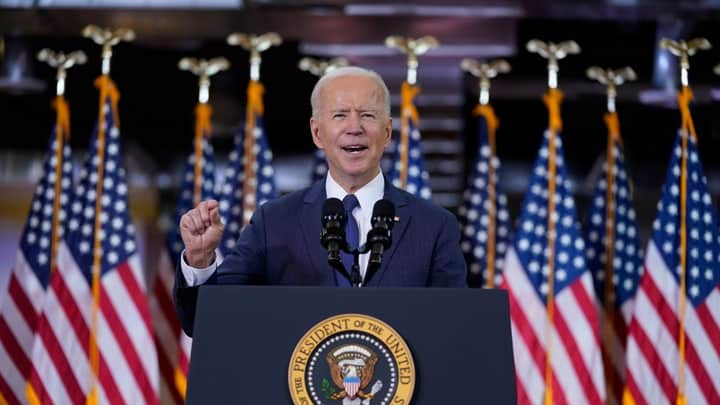President Biden’s budget blueprint predicts modest economic growth during his presidency and beyond, despite the rosy rhetoric Biden has projected on how a federal spending spree is needed to spur on job creation.
Tucked into Biden’s massive $6 trillion budget proposal he released Friday is a chart on White House assumptions on gross domestic product (GDP) gains through 2031 and it reveals the White House is not projecting any long-term economic boom.
The Biden administration predicts a healthy rebound from the coronavirus doldrums of 5.2% growth in 2021, but by 2023 economic growth will reach just 2% when adjusted for inflation.
Then between 2024 to 2029, GDP will grow by a meager 1.8% or 1.9%, before reaching 2% again in 2030 and 2031, according to the White House assumptions.
That pace for growth is below the GDP gains of the last decade when the economy grew by an average of 2.3% between 2010 and 2019.
Republicans quickly panned the budget for the massive spending plans they say will drive up the debt and inflation, while doing little to boost the economy.
“The $6 trillion Biden budget is reckless, wasteful and anti-American,” said Rep. Jim Banks, R-Ind., the chairman of the Republican Study Committee. “It doubles down on the Biden strategy of spending money we don’t have and includes trillion dollar deficits as far as the eye can see.”
Biden’s fiscal 2022 budget request tallies up the administration’s eight-year, $2.3 trillion American Jobs Plan and the $1.8 trillion American Families Plan and incorporates them into Biden’s $1.5 trillion request for annual operating expenditures, which includes the Pentagon and other federal agencies.
The proposal would push debt levels held by the public to the highest levels since World War II in 2024.
Under the plan, the deficit would hit $1.8 trillion in 2022 and would routinely run above $1.3 trillion over the next decade, despite nearly $3 trillion in proposed tax increases. The gap between what the government spends and what it collects in revenue would grow to nearly $1.6 trillion by 2031.
Biden has stood by the need for more federal spending.
“Now is the time to build the foundation that we’ve laid, to make bold investments in our families, in our communities, in our nation,” Biden said in Cleveland on Thursday. “We know from history that these kinds of investments raise both the floor and the ceiling of an economy for everybody.”

